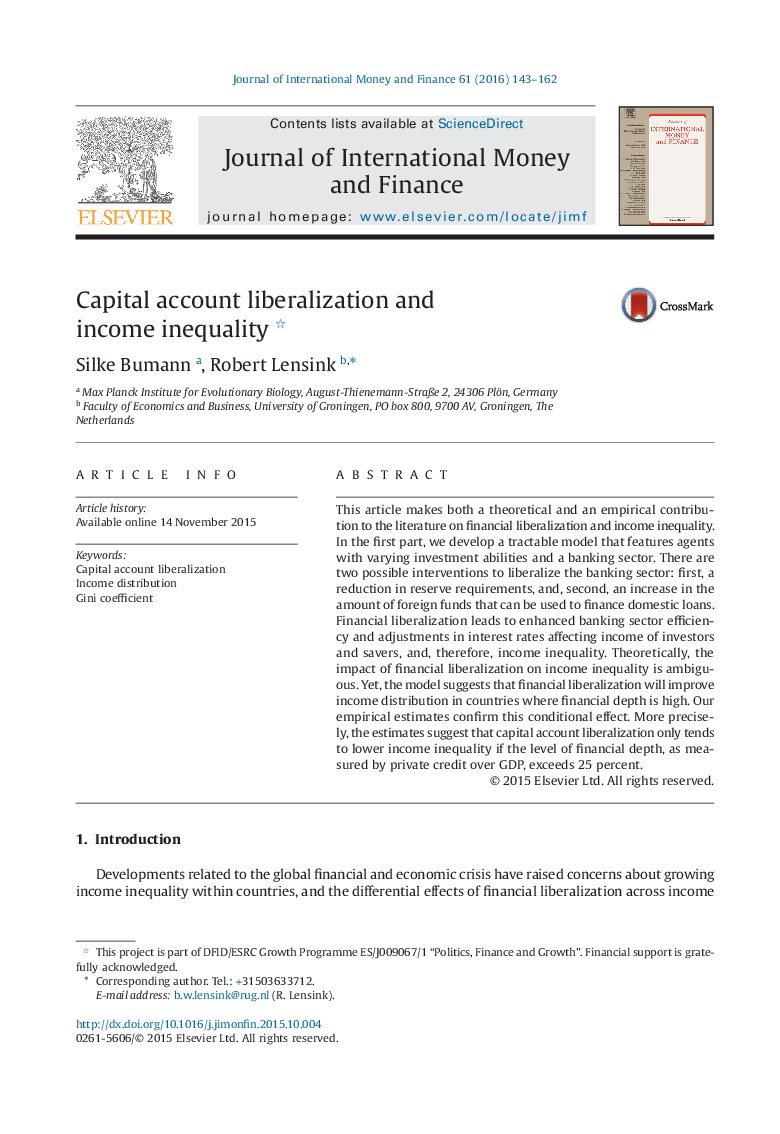| Article ID | Journal | Published Year | Pages | File Type |
|---|---|---|---|---|
| 963814 | Journal of International Money and Finance | 2016 | 20 Pages |
•Study on capital account liberalization and income distribution•Impact of liberalization on distribution depends on financial depth•Use of new inequality data from the University of Texas Inequality Project•GMM panel regressions
This article makes both a theoretical and an empirical contribution to the literature on financial liberalization and income inequality. In the first part, we develop a tractable model that features agents with varying investment abilities and a banking sector. There are two possible interventions to liberalize the banking sector: first, a reduction in reserve requirements, and, second, an increase in the amount of foreign funds that can be used to finance domestic loans. Financial liberalization leads to enhanced banking sector efficiency and adjustments in interest rates affecting income of investors and savers, and, therefore, income inequality. Theoretically, the impact of financial liberalization on income inequality is ambiguous. Yet, the model suggests that financial liberalization will improve income distribution in countries where financial depth is high. Our empirical estimates confirm this conditional effect. More precisely, the estimates suggest that capital account liberalization only tends to lower income inequality if the level of financial depth, as measured by private credit over GDP, exceeds 25 percent.
